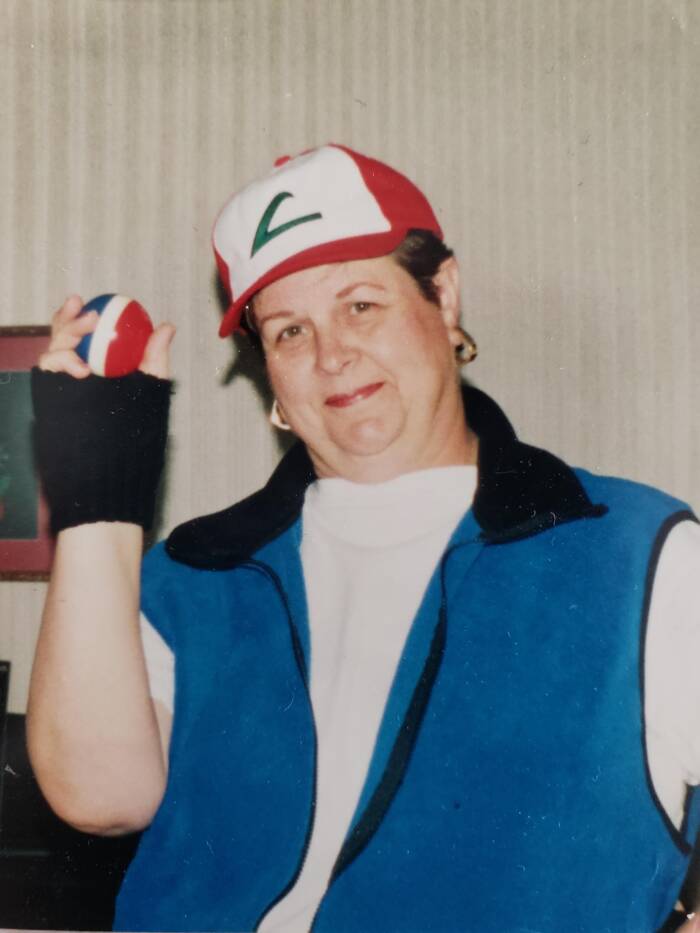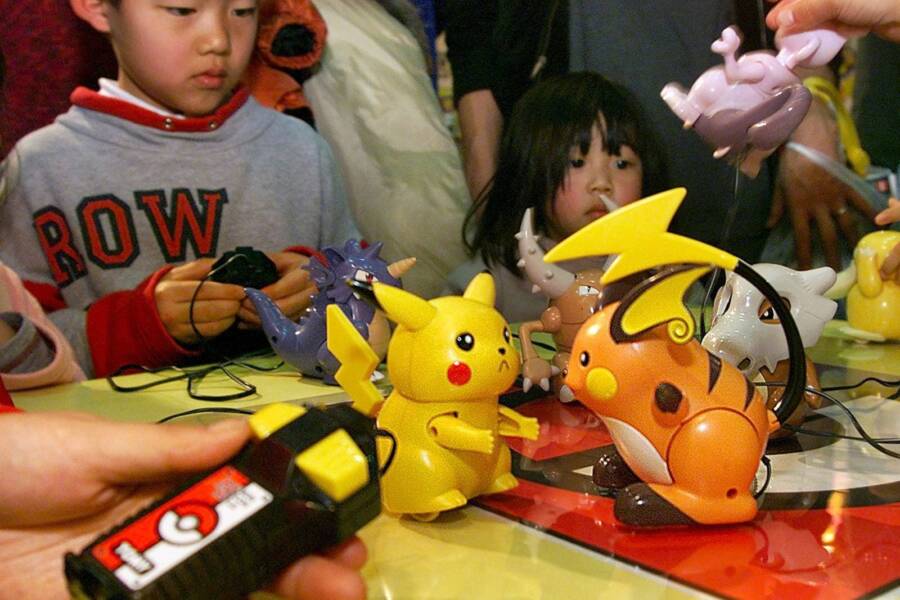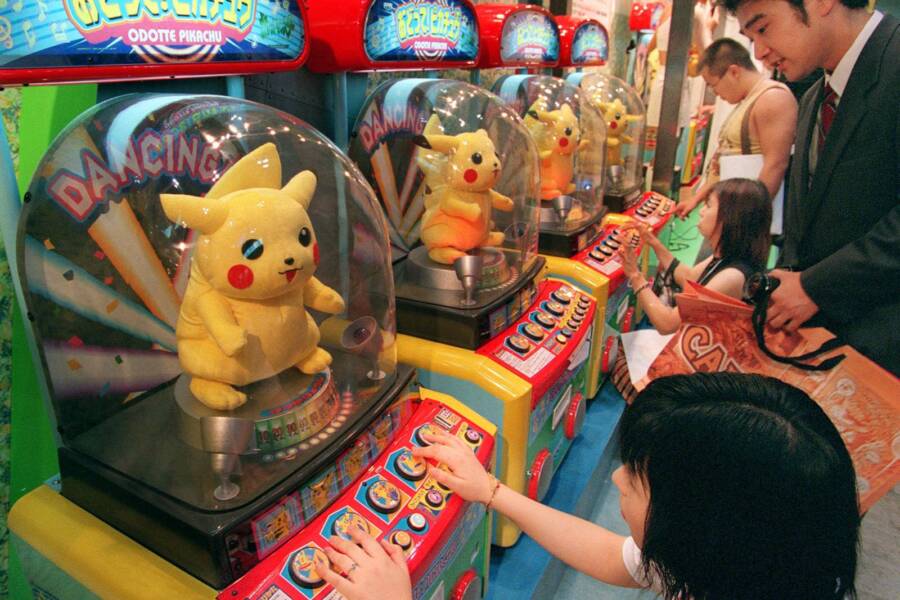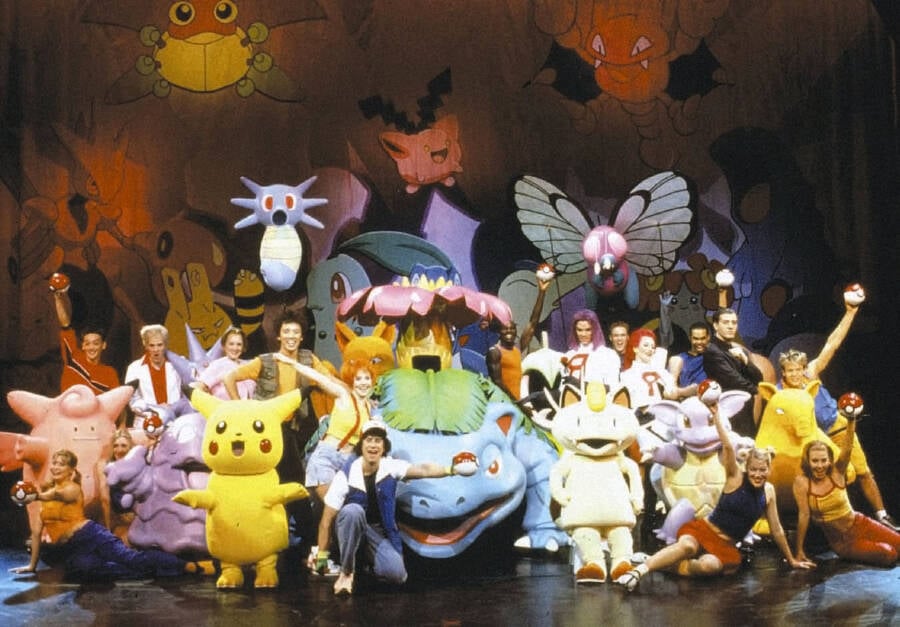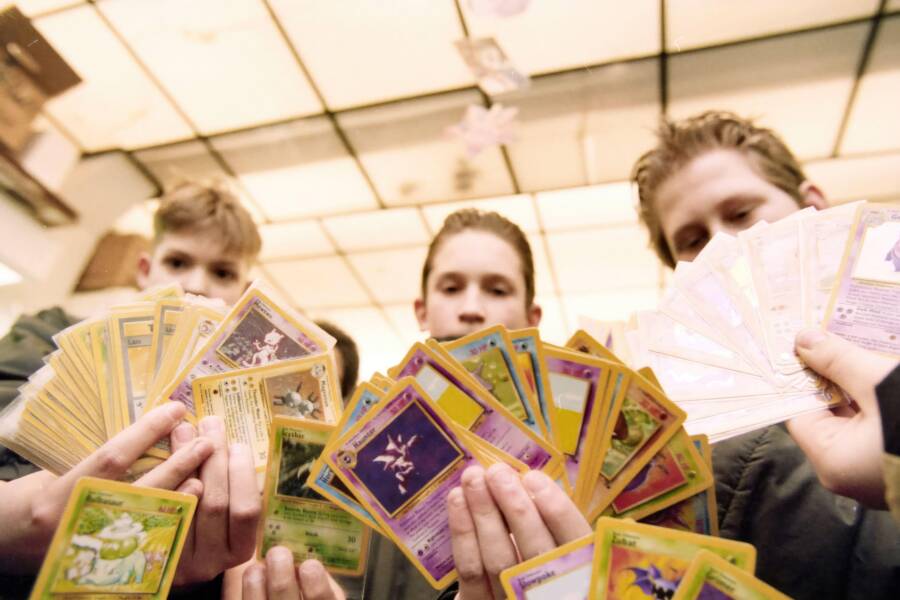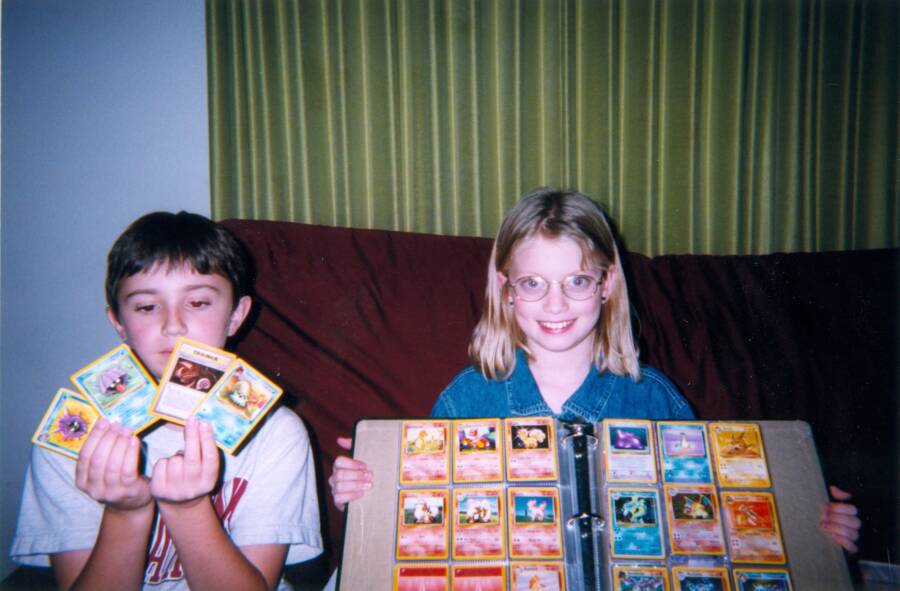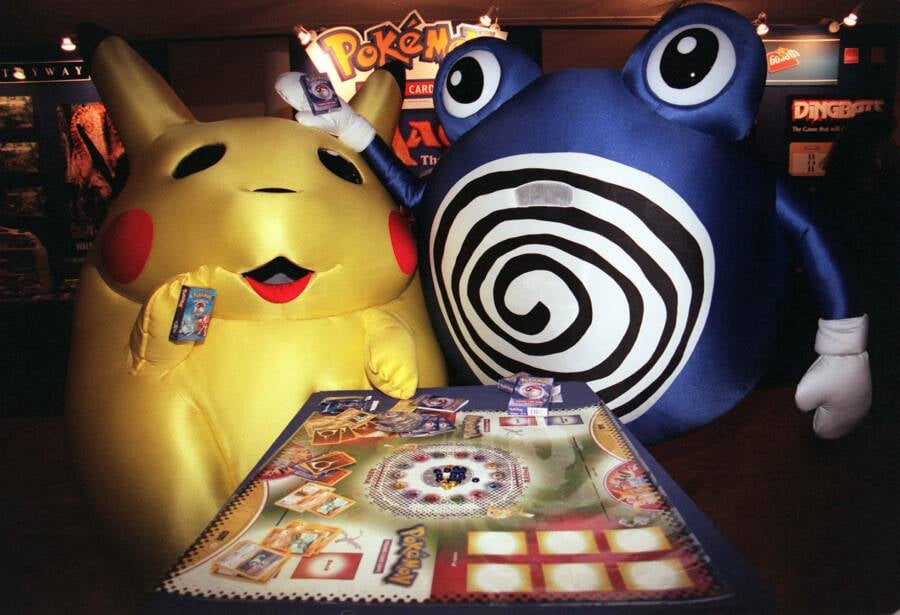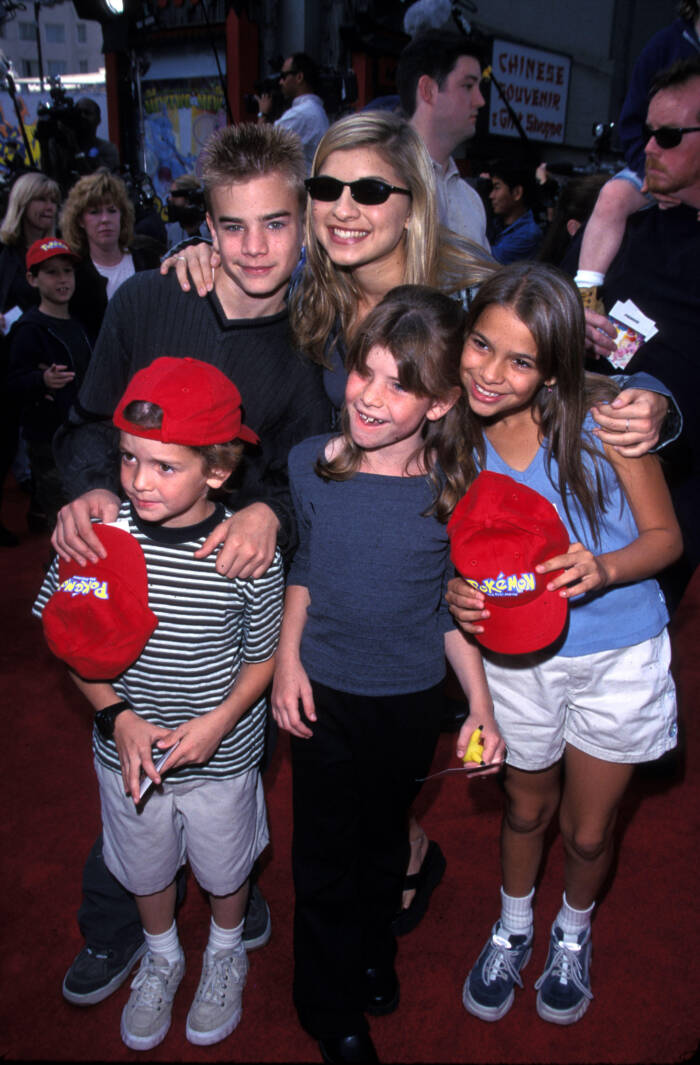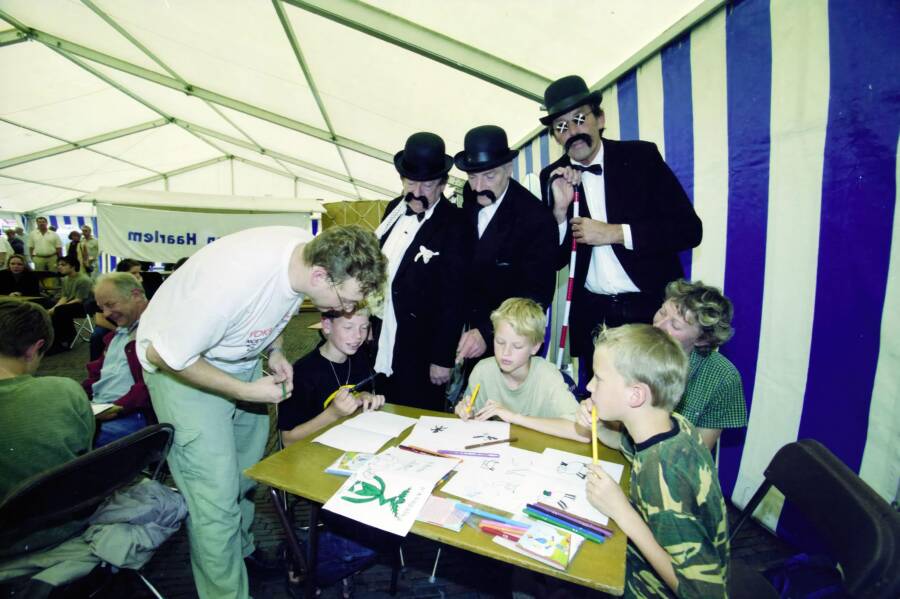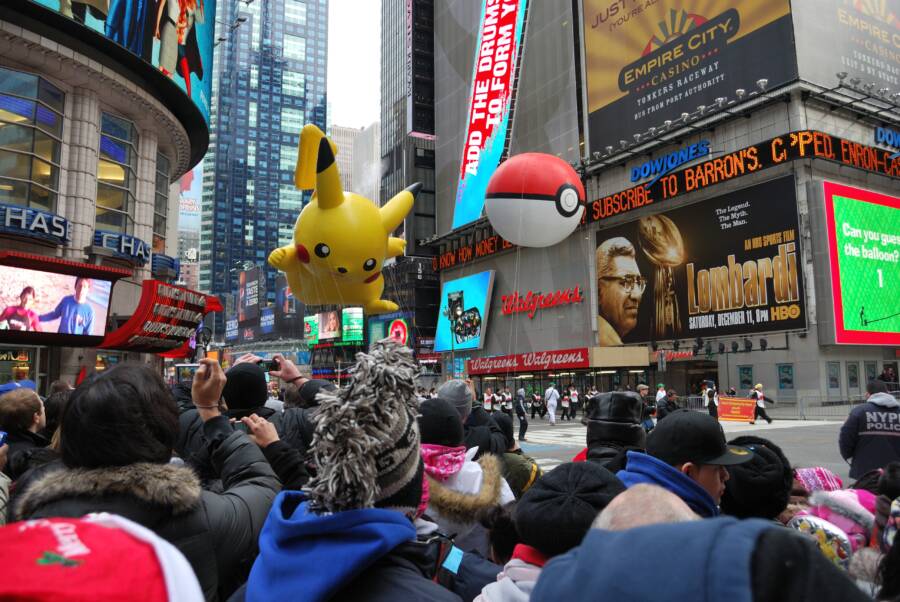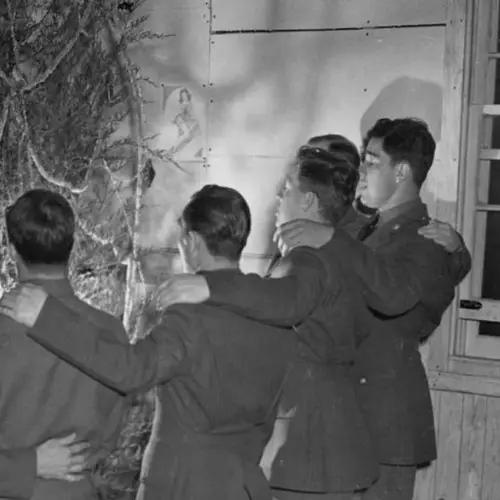From planes decorated with Pikachu to Pokémon-shaped noodles, these vintage images capture the pinnacle of Pokémania.
Anyone who grew up in the late 1990s or early 2000s will understand the pop culture craze that was Pokémon. Ever since the debut of Pokémon Red and Pokémon Green in 1996 in Japan, it was clear that these creature-collecting games would be a phenomenon. When they arrived in America a couple of years later, that phenomenon got a name: Pokémania.
Between a televised anime, multiple video games, trading cards, theatrical films, and numerous brand partnerships, Pokémon was basically inescapable. These early years skyrocketed Pokémon’s popularity, eventually making it the most valuable media franchise in the world. Stunningly, it’s brought in more than $100 billion in revenue over the years.
The enduring popularity of Pokémon into the 2020s can be partially attributed to the release of the mobile game Pokémon GO in 2016, nostalgically bringing an entire generation’s favorite creatures to their smartphones, while also encouraging fans to get outside and walk more. The new wave of Pokémania may not have rivaled the boom of the late 1990s, but it made it clear that Pokémon wasn’t going anywhere anytime soon.
Satoshi Tajiri And The Origins Of Pokémon
Pokémon, a combination of the words "Pocket Monsters," began with a Japanese game designer by the name of Satoshi Tajiri. Tajiri, a fan of anime who grew up collecting various insects and amphibians, saw a huge potential with Nintendo's handheld console, the Game Boy.
He wanted to create a video game that could be played in short sessions so that schoolchildren could play between their classes. Tajiri was also interested in taking advantage of the Game Boy's communication cable, which allowed gamers to connect their consoles together.
The result of Tajiri's vision was Pokémon — specifically, the first two games in the series, Pokémon Red and Pokémon Green, developed by Tajiri's gaming company, Game Freak. The games were instant successes, as the gameplay of catching cute Pokémon, training them to become stronger, and eventually becoming the Pokémon champion appealed to boys and girls alike.
"As a creator, I want people to enjoy playing my game in lots of different ways," Tajiri said in a translated 1997 interview. "For example, some people keep their Pikachu cute, and train it to get stronger without evolving it."
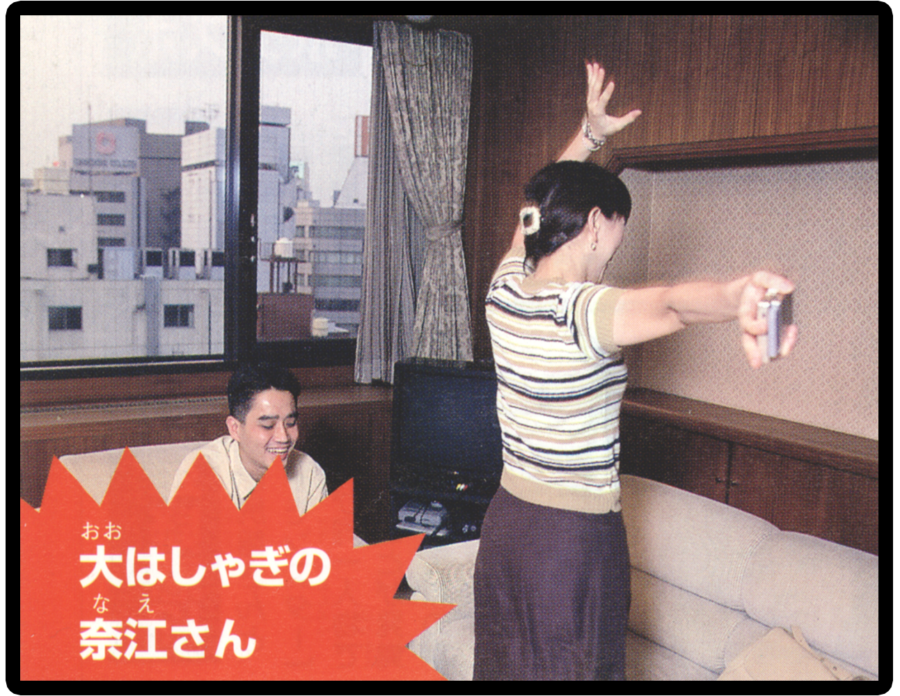
Famimaga 64During the 1997 interview, Satoshi Tajiri gave his interviewer a Game Boy Pocket and a copy of Pokemon Blue. The translated caption reads: "Yuuki's so excited, she's completely forgotten to do the interview..."
Tajiri expressed that the initial idea for Pokémon actually stemmed from the Game Boy Link Cable. Before Pokémon, this cable was used in games like Tetris to compete against another player and see their screen, but Tajiri felt that the cable could be used in another way — to trade between devices.
"The first idea I had for Pokémon was trading with the Game Boy Link Cable," Satoshi Tajiri remembered. "When you hear the word 'link,' doesn't it paint a mental image of things flying back and forth? ... We wanted to do something a bit different with Pokémon, so we made it where you could collect monsters by trading back and forth."
It's no wonder, then, that just months after the first Pokémon games hit store shelves, a collectible trading card game was released in Japan. Pokémon also spawned a successful anime adaptation in Japan, but its success, of course, was not limited to the Land of the Rising Sun. In August 1998, Pokémon debuted in America — and Pokémania was in full swing.
Pokémania Takes Over The United States

RedditA Heinz canned pasta dish, with Pokémon-shaped noodles, amidst other Pokémon-themed foods.
Just like in Japan, Pokémon was huge in the United States. Shortly after its debut, the video game, television show, and trading card game exploded in popularity across America. The social aspects of the game, and the trading and collecting of cards, made Pokémon an international sensation. By the end of 1999, the franchise was set to rake in over $1 billion in North America.
Everywhere you looked, Pokémon was there. The Pokémon brand was used to sell nearly everything, from t-shirts and collectible toys to foods like cereal and even Heinz canned pasta, oddly enough.
The success of Pokémon continued into the early 2000s, thanks to additional games in the video game series, the continuing popularity of the televised anime, and even a theatrical release of Pokémon: The First Movie and its follow-up, Pokémon the Movie 2000.
By the mid-2000s, the initial highs of Pokémania gradually began to fade away, though that didn't mean Pokémon was any less popular. New iterations of the game continued to sell millions of copies. The televised anime spanned multiple series, until the story of Ash Ketchum came to an end in 2023 (only for a new anime, Pokémon Horizons: The Series, to debut the same year). Countless spin-offs of the Pokémon games have also been made, ranging from Pokémon Pinball to the 2016 smash hit, Pokémon GO.
Throughout all of this, though, Pokémon wasn't without its controversy.
Controversies Surrounding Pokémon
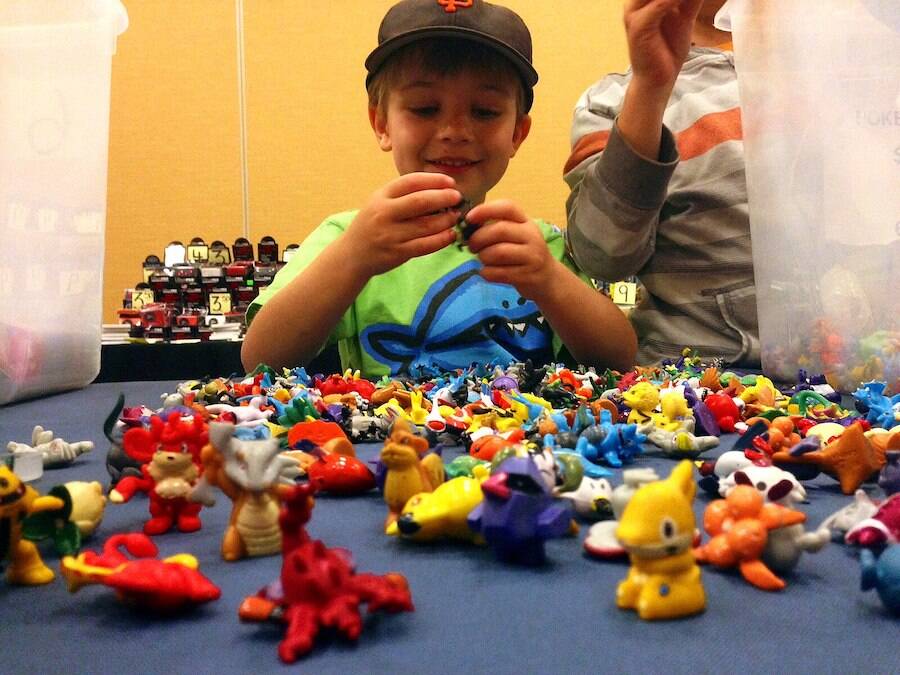
Nabeel H/Wikimedia CommonsThough Pokémon was massively popular with kids of all ages, some adults expressed concern about the media franchise.
In America, concerns were raised that, despite the cute appearance of Pokémon, it was dangerous to expose children to violence. Of course, this was a common misconception about video games throughout the 1990s — that violent video games would, in turn, make people more violent — but it was nonetheless a concern given Pokémon's staggering popularity.
Some educators became worried that the addictive nature of Pokémon games and cards could be a distraction in schools. And some more conservative groups and staunchly religious Christian sects even worried that Pokémon could potentially be demonic, influencing children to abandon God — a sentiment likely carried over from the Satanic Panic.
Even in recent years, some concerned religious figures have raised fears over Pokémon's alleged Satanic influence. The Spiritual Warfare Blog, for instance, asserts a few "personal, basic Christian concerns with Pokémon."
"Pokémon advocates for practices identical to those used by sorcerers, necromancers, mediums, psychics, spirit/ghost hunters, and shamans," the blogger claims. "These practices are clearly prohibited across the Bible, in both the Old and New Testaments, and across church history."
These claims ultimately did little to tamper the excitement surrounding Pokémon, though, and were relatively few and far between. Still, it's worth noting that, despite its cute presentation and seeming innocence, certain groups still took issue with the world's most valuable media franchise.
Pokémon GO And A New Wave Of Pokémania
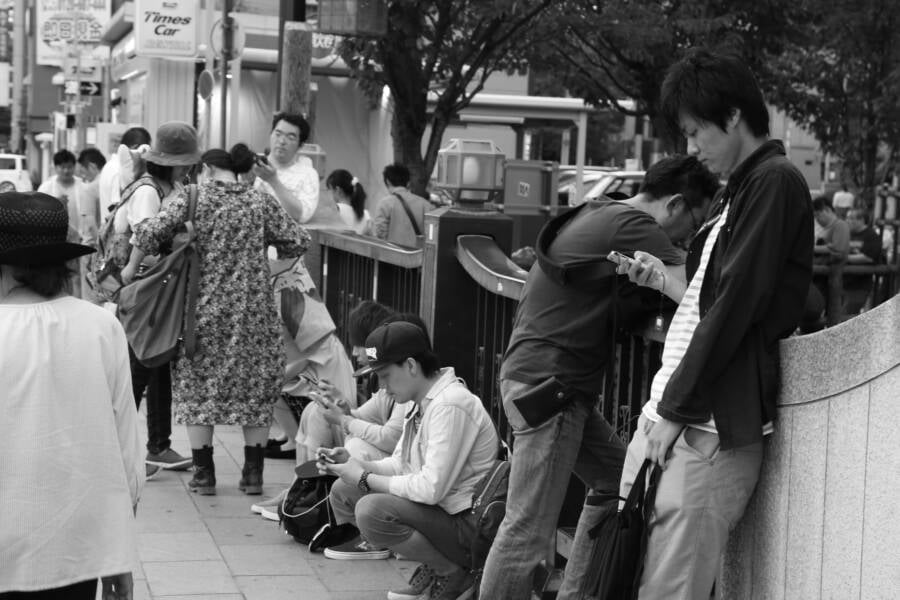
Wikimedia CommonsA group of Pokémon GO trainers in Sapporo, Hokkaido, Japan.
In 2016, a new wave of Pokémania dominated popular culture after The Pokémon Company partnered with mobile game developer Niantic to create Pokémon GO. The concept was fairly simple: Using your smartphone's GPS, you could walk around your neighborhood, collecting Pokémon and battling for dominance at local "gyms" while using the app.
The app took the addictive, fun, and now nostalgic nature of Pokémon and added an element of physical fitness — a recipe that made Pokémon GO one of the world's most successful mobile games, reaching a whopping $1 billion in revenue within the first seven months of its release.
At its peak, Pokémon GO had more than 28 million daily active users in America, and even though those numbers have declined in recent years, it is still a popular app. In fact, Forbes in 2018 ran an article with the headline calling Pokémon GO "The World's Most Important Game."
"Pokémon GO is the world's most important game," contributor JV Chamary wrote. "Thanks to its success, it will almost certainly influence the design of future AR experiences for years to come. But the game could also have a broader impact on society through its potential health benefits."
Though this "second wave" of Pokémania would never rival the initial craze, it helped further cement Pokémon's staying power in pop culture. It's truly incredible that the media franchise's impact has endured for nearly 30 years now — and it doesn't seem to be going anywhere anytime soon.
After reading about the cultural phenomenon that was Pokémania, explore the dramatic rise and fall of Blockbuster through our gallery of 23 vintage photos. Then, see 33 jaw-dropping images of 1980s Miami.







